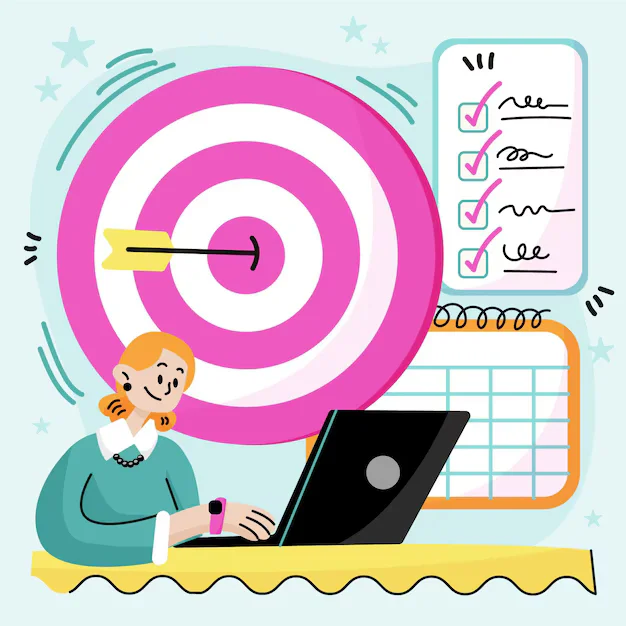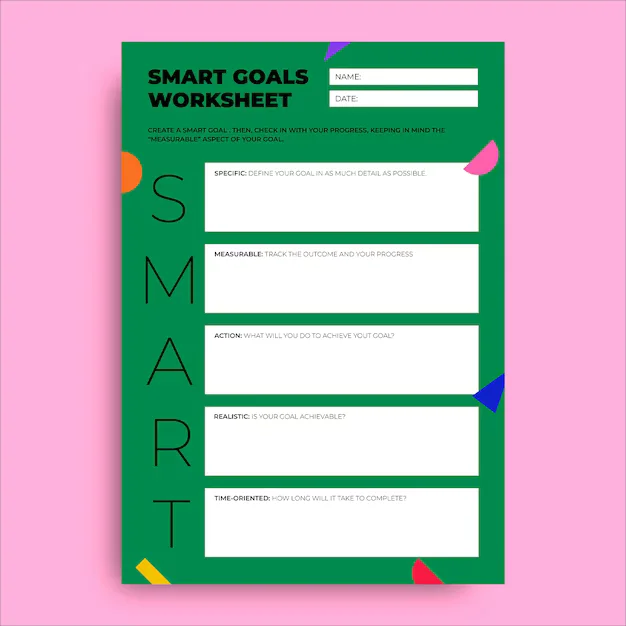Employee goal setting worksheet: How to accomplish your goals

If you struggle with getting things done, then you probably need a goal setting worksheet. Performing tasks can be incredibly challenging, especially as an employee. However, are there handy tools that can help you accomplish your goals?
Organizing your goals is an excellent way to stay focused and committed to achieving them. As a result, you may have to commit to documenting your goals or writing them out to keep on track and motivated. In this article, we will discuss what a goal setting worksheet is and how it benefits the average employee.
Also, we will consider how the worksheet helps you accomplish your goals. Therefore, if you keep going back and forth with setting and meeting your goals, here is a simple guide to working you through about employee goal setting worksheet, how to accomplish your goals.
What is a goal setting worksheet?
A goal setting worksheet is a visible (hard or soft) copy of your goals and a physical reminder of your commitment to work. It Is a document that holds you accountable to yourself if you created the worksheet.
Why do you need a goal setting worksheet?
Whether it is for work or personal reasons, there are a couple of reasons why you need a goal-setting template. Among other relevant reasons is for personal accountability with your work. A goal-setting template also keeps you in check with significant changes along the line.
The reason is that as you move forward in your career, there is a tendency to forget the initial goals you set, especially at the earliest stage of your work. Therefore, a worksheet is a handy tool for ensuring that you do not lose focus on your initial achieving goals.
As a result, there are necessary steps you need to take when tracking progress in your skills, offering support to new hires, and ensuring that goals are time bound. These steps help maintain meaningful goals within a smart framework and determine the most effective way of setting goals.
What exactly is an employee goal setting worksheet?

Employee goal setting worksheet is the act of establishing defined, quantifiable, and role-based objectives for employees to work toward while employed by your organization. Employee goals are typically the result of a collaborative effort between a manager and a direct report.
They consider the employee's personal development goals, the requirements of their future planned career, and resource availability. The idea is to use these work goals to evaluate development progress and suggest any upskilling or ongoing education that may be required to achieve these goals throughout their time at your organization. They can be short-term or long-term goals, and any rewards for completing them should be proportionate to their significance.
The Advantages of Setting Employee Goals
Using goal setting worksheet to enhance talent development can result in a slew of advantages, including:
-
Increased staff engagement: Giving your staff something to strive for can improve motivation and job performance on a daily basis. Skill development provides people with the means to realize their objectives.
-
An advantage in competition: InStride polled 96 percent of business leaders, who believe that investing in employee skill development gives their company a competitive advantage. When skill development and employee goals align with business objectives, it can ultimately drive organizational growth.
-
Improved retention rates: 94 percent of employees leaving a job believe they would stay if their firm invested more in workforce education. It is obvious that fostering skill development and continual learning as part of a goal-setting process will assist reduce turnover.
Steps to filling out a goal setting worksheet

Filling out a goal setting worksheet is the steps you take to create your employee work targets and expectations. Essentially, these work targets can be made by the employer or employee. And the sole purpose for it is to keep the worker in line with the proposed objective of the enterprise. Here are a few steps to filling out a goal setting worksheet.
Set up your desired goal
It is where you tackle the major challenge with goal setting. The brainstorming aspect of goal setting is where you ask and answer a couple of questions about your goals. Essentially, you get to plan your goals according to the SMART benchmark. SMART stands forIf you wonder how to set up SMART goals, here is a little checklist to help you out.
-
Specific - A clear written down goal
-
Measurable - Let your goal align with your vision and values
-
Attainable - Ensure your plan is feasible
-
Relevant - Know the particular end of your purpose and its importance.
-
Timely - Have a completion date in mind of the time frame for completion.
Why does setting a goal matter?
After checking your goal through the SMART goal checklist, it is time to ask yourself about the relevance of your plan. In this case, you need to consider the relevance of your goal to not only you but your organization and everyone else around.
What are the possible hindrances?
Once you are clear on the relevance of your goal, it is time to consider possible hindrances and what potential problems or constraints you can think of that will hinder your goal actualization. An excellent way to make such projections is to ask yourself “if questions.”
What are your items to accomplish your goals?
Action items are those things that will help you actualize your goals as your ingredients for a hearty meal. Your action items are your mini goals. Essentially, they are the preliminary aspects of your dreams that will lead to completing your significant goals when completed.
Therefore, you will have to include those small goals that lead to the ultimate goals in your employee goal setting worksheet. And this is how you advance towards accomplishing your goals.
Examples of employee goal setting worksheet
Employees can use a variety of "buckets" to create goals ranging from the highly personal to the organizational.
-
Role-specific objectives are those that employees set for positions they already have or desire to occupy within the firm. This aim can be related to job performance, advancement, or personal productivity. For example, a Junior Marketing Associate can establish a goal of becoming a Marketing Specialist, and measures such as training, upskilling, and increasing responsibilities can help them get there.
-
Individuals and groups working together can define team-specific goals for themselves and others. This assists in organizing and strategizing your team, as well as clearly outlining the duties and responsibilities of the individuals who comprise your team. For example, the marketing department intends to launch a new social media campaign in the coming quarter. The team sets a target of completing a short-form certificate in Instagram marketing to guarantee that everyone is ready for the launch.
-
Individual growth goals are those established by the employee that may or may not be related to work but can still improve job performance and engagement. For example, if an employee wants to spend more time with their family, they will set the goal of completing remote tasks by 5:00 p.m. so that they can be fully present at home.
Regularly review your objectives
It is critical to monitor the progress of your goals on a frequent basis. You can reevaluate the strategy on a daily, weekly, monthly, or biannual basis, depending on its depth. Examine the steps you've made to achieve your goal, and if they've been successful, keep doing them. If you discover that the goal is more difficult to reach than you anticipated, make changes to accelerate your progress.
How Paystubsnow helps you accomplish your goals
Perhaps your goal is to take digitalization a step further in your organization. You can generate online paystubs for your employees and online invoices for your clients with Paystubsnow. Some other services available on Paystubsnow are 1099 forms and W-2 forms.

